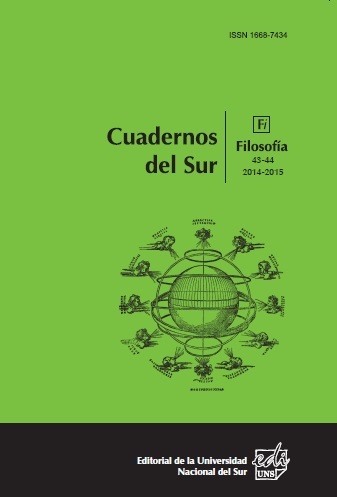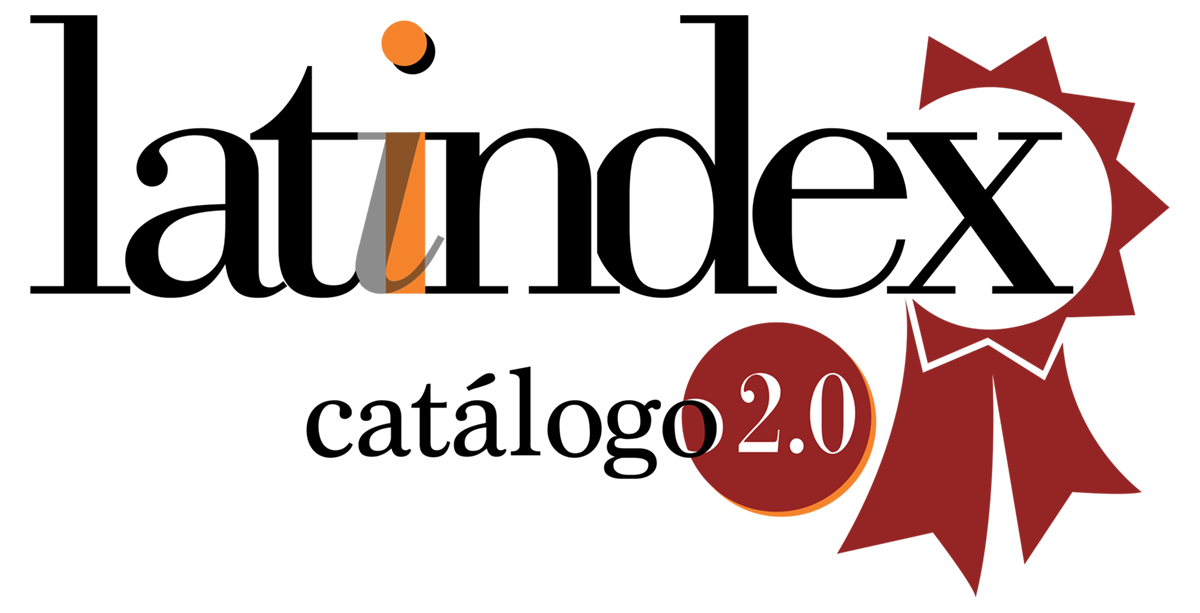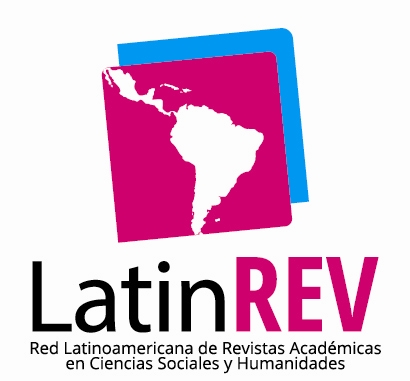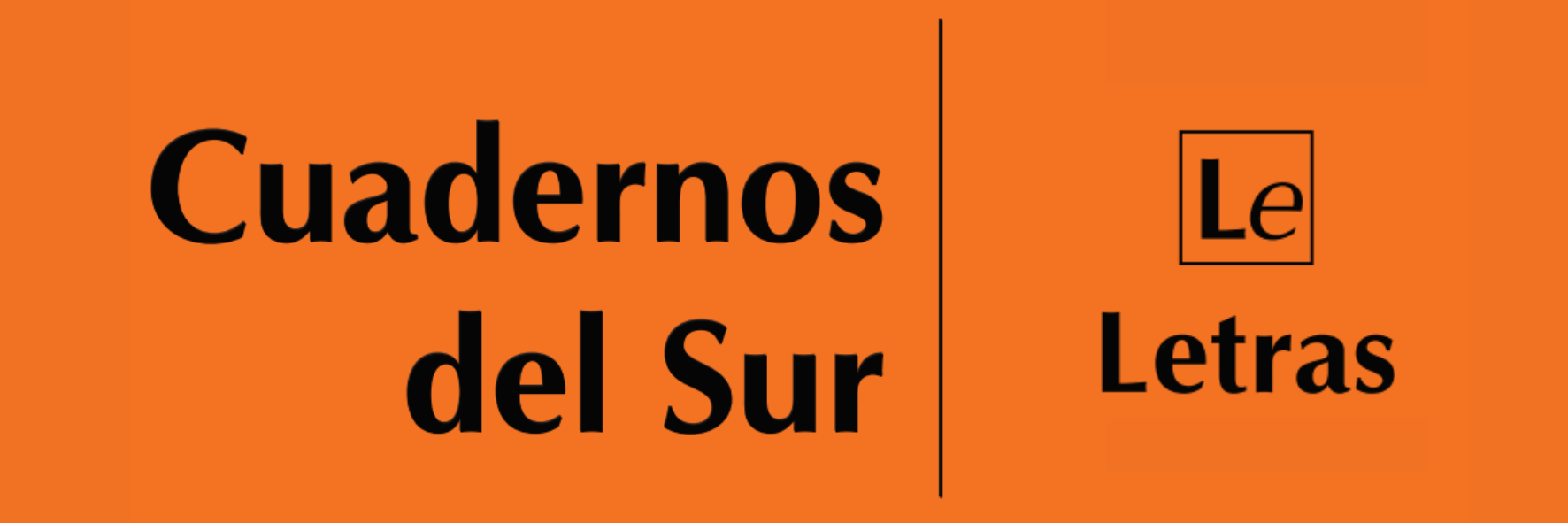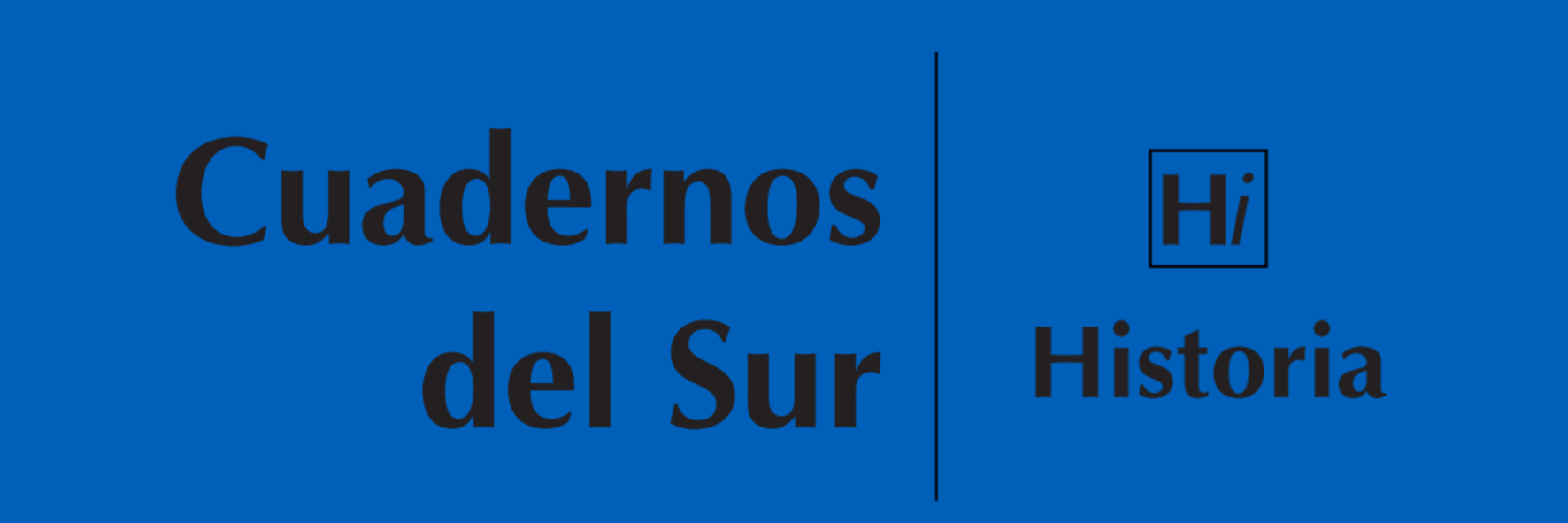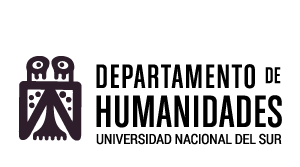Principios-guía y leyes fundamentales en la metateoría estructuralista
Palabras clave:
Principios-guía, Leyes fundamentales, Estructuralismo metateóricoResumen
El objetivo del presente trabajo es proponer una caracterización de principio -guía y ley fundamental en el marco de la metateoría estructuralista. Se señalan cinco “condiciones necesarias”, “condiciones necesarias débiles” o «síntomas» que debe satisfacer o mostrar un enunciado para que sea considerado como una ley fundamental de una teoría: 1) poseer carácter arracimado o sinóptico, 2) valer en todas las aplicaciones intencionales, 3) ser cuasi-vacuo (“empíricamente irrestricto” o, si se prefiere, “sintético a priori” o incluso “analítico a posteriori”), 4) cumplir con un papel sistematizador, y 5) poseer fuerza modal, y se caracteriza a los principios-guía como leyes fundamentales de un tipo peculiar, a saber: como leyes fundamentales que poseen las siguientes características adicionales: contar con al menos un “funcional” dentro de sus términos Tteóricos y cuantificar existencialmente sobre él. Luego se relaciona del análisis presentado con el problema de las leyes de la naturaleza. Y se concluye con la discusión de algunos posibles contraejemplos.
Descargas
Citas
Armstrong, David (1983), What is a Law of Nature?, Cambridge, Cambridge University Press.
Ayer, Alfred J. (1956), “What Is a Law of Nature?”, Revue International de Philosophie, vol. 36, pp. 144-165.
Balzer, Wolfgang (1978), Empirische Geometrie und Raum-Zeit-Theorie in mengen-theoretischer Darstellung, Kronberg, Scriptor.
----- (1982), Empirische Theorien: Modelle-Strukturen-Beispiele, Braunschweig, Vieweg, [traducción castellana revisada: Teorías empíricas: modelos, estructuras y ejemplos, Madrid, Alianza, 1997].
----- (1985), Theorie und Messung, Berlin, Springer.
----- (1996), “Theoretical Terms: Recent Developments”, en Balzer, Wolfgang y Moulines, C. Ulises (eds.), Structuralist Theory of Science. Focal Issues, New Results, Berlin, de Gruyter, pp. 139-166.
Balzer, Wolfgang y Dawe, Chris M. (1990), Models for Genetics, München, Institut für Philosophie, Logik und Wissenschaftstheorie.
Balzer, Wolfgang y Lorenzano, Pablo (2000), “The Logical Structure of Classical Genetics”, Zeitschrift für allgemeine Wissenschaftstheorie, vol. 31, pp. 243-266.
Balzer, Wolfgang y Marcou, Ph. (1989), “A Reconstruction of Sigmund Freud’s Early Theory of the Unconscious”, en Westmeyer, Hans (ed.), Psychological Theories from a Structuralist Point of View, Berlin, Springer, pp. 13-31.
Balzer, Wolfgang y Moulines, C. Ulises (1981), “Die Grundstruktur der klassischen Partikelmechanik und ihre Spezialisierungen”, Zeitschrift für Naturforschung, vol. 36, n° 6, pp. 600-608.
Balzer, Wolfgang y Moulines, C. Ulises (eds.) (1996), Structuralist Theory of Science. Focal Issues, New Results, Berlin, de Gruyter.
Balzer, Wolfgang y Mühlhölzer, Felix (1982), “Klassische Stoβmechanik”, Zeitschrift fi ir allgemeine Wissenschaftstheorie, vol. 13, n° 1, pp. 22-39.
Balzer, Wolfgang y Sneed, Joseph (1977), “Generalized Net Structures of Empirical Theories I & II”, Studia Logica, vol. 36, pp. 195-211.
----- (1978), “Generalized Net Structures of Empirical Theories I & II”, Studia Logica, vol. 37, pp. 167-194.
Balzer, Wolfgang, Moulines, C. Ulises y Sneed, Joseph (1987), An Architectonic for Science. The Structuralist Program, Dordrecht, Reidel.
Balzer, Wolfgang, Moulines, C. Ulises y Sneed, Joseph (eds.) (2000), Structuralist Knowledge Representation: Paradigmatic Examples, Amsterdam, Rodopi.
Bartelborth, Thomas (1988), Eine logische Rekonstruktion der klassischen Elektrodynamik, Frankfurt am Main, Peter Lang.
----- (1996a), Begründungsstrategien. Ein Weg durch die analytische Erkenntnistheorie, Berlin, Akademie Verlag.
----- (1996b), “Scientifi c Explanation”, en Balzer, Wolfgang y Moulines, C. Ulises (eds.), Structuralist Theory of Science. Focal Issues, New Results, Berlin/New York, Walter de Gruyter, pp. 23-43.
----- (1999), “Coherence and Explanation”, Erkenntnis, vol. 50, pp. 209-224.
----- (2002), “Explanatory Unifi cation”, Synthese, vol. 130, pp. 91-107.
Bokulich, Alisa (2008), Reexamining the Quantum-Classical Relation: Beyond Reductionism and Pluralism, Cambridge, Cambridge University Press.
----- (2009), “Explanatory Fictions”, en Suárez, Mauricio (ed.), Fictions in Science. Philosophical Essays on Modeling and Idealization, London, Routledge, pp. 91-109.
Braithwaite, Richard (1953), Scientifi c Explanation, Cambridge, Cambridge University Press.
Carnap, Rudolf (1939), “Foundations of Logic and Mathematics”, International Encyclopedia of Unifi ed Science, vol. 1, nº 3, pp.1-71.
----- (1947), “On the Application of Inductive Logic”, Philosophy and Phenomenological Research, vol. 8, pp. 133-147.
----- (1956), “The Methodological Character of Theoretical Concepts”, en Feigl, Herbert y Scriven, Michael (eds.), Minnesota Studies in the Philosophy of Science, vol. I, Minneapolis, University of Minnesota Press, pp. 38-76.
----- (1966), Philosophical Foundations of Physics: An Introduction to the Philosophy of Science, New York, Basic Books.
Carrier, Martin (1995), “Evolutionary Change and Lawlikeness: Beatty on Biological generalizations”, en Wolters, Gereon y Lennox, James (eds.), Concepts, Theories and Rationality in the Biological Sciences, Konstanz, Konstanz University Press and Pittsburgh University Press, pp. 82-97.
Cartwright, Nancy (1983), How the Laws of Physics Lie, Oxford, Clarendon Press.
----- (1999), The Dappled World. A Study of the Boundaries of Science, Cambridge, Cambridge University Press.
----- (2005), “No God; No Laws”, en Sindoni, Elio y Moriggi, Stefano (eds.), Dio, la Natura e la Legge, God and the Laws of Nature, Milan, Angelicum-Mondo X, pp. 183-190.
Cartwright, Nancy, Shomar, Towfi c y Suárez, Mauricio (1995), “The Tool Box of Science: Tools for Building of Models with a Superconductivity Example”, en Herfel, William et al. (eds.), Theories and Models in Scientifi c Processes, Amsterdam, Rodopi, pp. 27-36.
Chisholm, Roderick (1946), “The Contrary-to-Fact Conditional”, Mind, vol. 55, pp. 289-307.
Coffa, J. Alberto (1973), Foundations of Inductive Explanation, Ann Arbor, University Microfi lms.
Díez, José A. (2002a), “Explicación, unifi cación y subsunción teórica”, en González, Wenceslao (ed.), Pluralidad de la explicación científi ca, Barcelona, Ariel, pp. 73-93.
----- (2002b), “A Program for the Individuation of Scientifi c Concepts”, Synthese, vol. 130, pp. 13-48.
----- (2014), “Scientifi c w-Explanation as Ampliative, Specialized Embedding: A Neo-Hempelian Account”, Erkenntnis, vol. 79, n° 8, pp. 1413-1443.
Díez, José A. y Lorenzano, Pablo (2002), “La concepción estructuralista en el contexto de la fi losofía de la ciencia del siglo XX”, en Díez, José A. y Lorenzano, Pablo (eds.), Desarrollos actuales de la metateoría estructuralista: problemas y discusiones, Bernal, Universidad Nacional de Quilmes/Universidad Autónoma de Zacatecas/Universidad Rovira i Virgili, pp. 13-78.
----- (2013), “Who Got What Wrong? Sober and F&PP on Darwin: Guiding Principles and Explanatory Models in Natural Selection”, Erkenntnis, vol. 78, n° 5, pp. 1143-1175.
----- (por aparecer), “Are Natural Selection Explanatory Models A Priori?”, Biology & Philosophy, vol. 30, n° 6, pp. 787-809.
Dretske, Fred (1977), “Laws of Nature”, Philosophy of Science, vol. 44, pp. 248-268.
Elgin, Mehmet y Sober, Elliott (2002), “Cartwright on Explanation and Idealization”, Erkenntnis, vol. 57, pp. 441-450.
Falguera, José Luis (2012), “Leyes fundamentales, a priori relativizados y géneros”, en García de la Sienra, Adolfo y Lorenzano, Pablo (eds.), La metateoría estructuralista en Xalapa, Stoa, vol. 3, n° 5, pp. 65-85.
Ferrario, Roberta y Schiaffonati, Viola (2012), Formal Methods and Empirical Practices. Conversations with Patrick Suppes, Stanford, Center for the Study of Language and Information (CSLI).
Fodor, Jerry (1974), “Special Sciences (or: the Disunity of Science as a Working Hypothesis)”, Synthese, vol. 28, pp. 97-116.
----- (1991), “Hedged Laws and Psychological Explanations”, Mind, vol. 100, pp. 19-33.
Forge, John (1986). “David Armstrong on Functional Laws”, Philosophy of Science, vol. 53, n° 4, pp. 584-587.
----- (1999), Explanation, Quantity and Law, Aldershot, Ashgate.
----- (2002), “Refl ections on Structuralism and Scientifi c Explanation”, Synthese, vol. 130, pp. 109-121.
Giere, Ronald N. (1979), Understanding Scientifi c Reasoning, New York, Holt, Reinhart and Winston, [3ª ed. revisada, 1991].
----- (1988), Explaining Science. A Cognitive Approach, Chicago, University of Chicago Press.
----- (1995), “The Skeptical Perspective: Science without Laws of Nature”, en Weinert, Friedel (ed.), Laws of Nature. Essays on the Philosophical, Scientific and Historical Dimensions, Berlin, de Gruyter, pp. 120-138. Reimpreso como “Science without Laws of Nature”, en Giere (1999), pp. 84-96.
----- (1999), Science Without Laws, Chicago, University of Chicago Press.
Ginnobili, Santiago (2010), “La teoría de la selección natural darwiniana”, Theoria, vol. 25, n° 1, pp. 37-58.
Goodman, Nelson (1947), “The Problem of Counterfactual Conditionals”, Journal of Philosophy, vol. 44, pp. 113-128.
----- (1955), Fact, Fiction, and Forecast, Cambridge, Mass., Harvard University Press, [4ª ed., 1983].
Hanson, Norwood R. (1958), Patterns of Discovery, Cambridge, Cambridge University Press.
----- (1963), “The Law of Inertia; A Philosopher’s Touchstone”, Philosophy of Science, vol. 30, n° 2, pp. 107-121.
Hempel, Carl G. (1942), “The Function of General Laws in History”, The Journal of Philosophy, vol. 39, pp. 35-48.
----- (1958), “The Theoretician’s Dilemma”, en Feigl, Herbert, Scriven y Maxwell, Grover (eds.), Minnesota Studies in the Philosophy of Science, vol. II, Minneapolis, University of Minnesota Press, pp. 37-98.
----- (1965a), “Postscript (1964)”, en Hempel, Carl G., Aspects of Scientific Explanation and Other Essays in the Philosophy of Science, New York, Macmillan, pp. 47-51.
----- (1965b), “Aspects of Scientifi c Explanation”, en Hempel, Carl G., Aspects of Scientifi c Explanation and Other Essays in the Philosophy of Science, New York, Macmillan, pp. 331-496.
----- (1988), “Provisos: A Problem Concerning the Inferential Function of Scientific Theories”, en Grünbaum, Adolf y Salmon, Wesley (eds.), The Limitations of Deductivism, Berkeley, University of California Press, pp. 19-36.
Hempel, Carl G. y Oppenheim, Paul (1948), “Studies in the Logic of Explanation”, Philosophy of Science, vol. 15, pp. 135-175.
Hume, David (1739-1940), A Treatise of Human Nature, Cheapside, John Noon, Books I and II, London, Thomas Longman, Book III.
----- (1748), An Enquiry Concerning Human Understanding, London, A. Millar.
Kuhn, Thomas (1970a), The Structure of Scientifi c Revolutions, Chicago, University of Chicago Press, [2a ed].
----- (1970b), “Refl ections on my Critics”, en Lakatos, Imre y Musgrave, Alan (eds.), Criticism and the Growth of Knowledge, Cambridge, Cambridge University Press, pp. 231-278.
----- (1974), “Second Thoughts on Paradigms”, en Suppe, Frederick (ed.), The Structure of Scientifi c Theories, Urbana, University of Illinois Press, pp. 459-482.
----- (1976), “Theory-Change as Structure-Change: Comments on the Sneed Formalism”, Erkenntnis, vol. 10, pp. 179-199.
----- (1977), The Essential Tension. Selected Studies in Scientifi c Tradition and Change, Chicago, University of Chicago Press.
----- (1981), “What are Scientifi c Revolutions?”, Occasional Paper #18, Center for Cognitive Science, M.I.T.
----- (1983), “Rationality and Theory Choice”, Journal of Philosophy, vol. 80, pp. 563-570.
----- (1989), “Possible Worlds in History of Science”, en Allén, Sture (ed.), Possible Worlds in Humanities, Arts, and Sciences, Berlin, de Gruyter, pp. 9-32.
----- (1990), “Dubbing and Redubbing: the Vulnerability of Rigid Designation”, en Savage, C. Wade (ed.), Minnesota Studies in the Philosophy of Science, vol. 14, Minneapolis, University of Minnesota Press, pp. 298-318.
Lakatos, Imre (1970), “Falsifi cation and the Methodology of Scientifi c Research Programmes”, en Lakatos, Imre y Musgrave, Alan (eds.), Criticism and the Growth of Knowledge. Proceedings of the International Colloquium in the Philosophy of Science, London, 1965, Cambridge, Cambridge University Press, pp. 91-195.
----- (1971), “History of Science and Its Rational Reconstructions”, en Buck, Roger C. y Cohen, Robert S. (eds.), PSA 1970, Boston Studies in the Philosophy of Science, vol. 8, Dordrecht, Reidel, pp. 174-182.
----- (1974), “Popper on Demarcation and Induction”, en Schilpp, Paul (ed.), The Philosophy of Karl Popper, LaSalle, Ill., Open Court, vol. I, pp. 241-273.
Laudan, Larry (1977), Progress and Its Problems, Berkeley, University of California Press.
Lewis, David (1973a), Counterfactuals, Cambridge, Mass., Harvard University Press.
----- (1973b), “Causation”, Journal of Philosophy, vol. 70, pp. 556-567.
----- (1983), “New Work for a Theory of Universals”, Australasian Journal of Philosophy, vol. 61, pp. 343-377.
Lorenzano, Pablo (1995), Geschichte und Struktur der klassischen Genetik, Frankfurt am Main, Peter Lang.
----- (2000), “Classical Genetics and the Theory-Net of Genetics”, en Balzer, Wolfgang, Moulines, C. Ulises y Sneed, Joseph (eds.), Structuralist Knowledge Representation: Paradigmatic Examples, Amsterdam, Rodopi, pp. 251-284.
----- (2002), “La teoría del gen y la red teórica de la genética”, en Díez, José A. y Lorenzano, Pablo (eds.), Desarrollos actuales de la metateoría estructuralista: problemas y discusiones, Bernal, Universidad Nacional de Quilmes/Universidad Autónoma de Zacatecas/Universidad Rovira i Virgili, pp. 285-330.
----- (2005), “Comentarios a ‘Explicación teórica y compromisos ontológicos: un modelo estructuralista’ de C. U. Moulines”, Enrahonar: quaderns de filosofía, vol. 37, pp. 55-59.
----- (2006), “Fundamental Laws and Laws of Biology”, en Ernst, Gerhard y Niebergall, Karl-Georg (eds.), Philosophie der Wissenschaft – Wissenschaft der Philosophie. Festschrift für C. Ulises Moulines zum 60. Geburstag, Paderborn, Mentis-Verlag, pp. 129-155.
----- (2007), “Leyes fundamentales y leyes de la biología”, Scientiae Studia. Revista Latino-Americana de Filosofía e História da Ciência, vol. 5, n° 2, pp. 185-214.
----- (2008a), “Lo a priori constitutivo y las leyes (y teorías) científi cas”, Revista de Filosofía, vol. 33, n° 2, pp. 21-48.
----- (2008b), “Bas van Fraassen y la ley de Hardy-Weinberg: una discusión y desarrollo de su diagnóstico”, Principia, vol. 12, n° 2, pp. 121-154.
----- (2011a), “Leis e teorias em biologia”, en Abrantes, Paulo C. (ed.), Filosofi a da Biologia, Porto Alegre, Artmed, pp. 53-82.
----- (2011b), “Racionalidad, leyes fundamentales y leyes de la biología”, en Pérez Ransanz, Ana Rosa y Velasco, Ambrosio (eds.), Racionalidad en ciencia y tecnología. Nuevas perspectivas iberoamericanas, México, UNAM, pp. 313-326.
----- (2013), “The Semantic Conception and the Structuralist View of Theories: A Critique of Suppe’s Criticisms”, Studies in History and Philosophy of Science, vol. 44, pp. 600-607.
----- (2014), “What is the Status of the Hardy-Weinberg Law within Population Genetics?”, en Galavotti, Maria Carla, Nemeth, Elisabeth y Stadler, Friedrich (eds.), European Philosophy of Science – Philosophy of Science in Europe and the Viennese Heritage, Vienna Circle Institute Yearbook 17, Dordrecht, Springer, pp. 159-172.
----- (por aparecer), “Leyes fundamentales y principios-guía en la metateoría estructuralista”, en Díez, José A. (ed.), Exploraciones pluralistas, México-Madrid, UNAM/Biblioteca Nueva.
Mackie, John L. (1966), “The Direction of Causation”, Philosophical Review, vol. 75, pp. 441-466.
Mitchell, Sandra D. (1997), “Pragmatic Laws”, Philosophy of Science, vol. 64 (Proceedings), pp. S468-S479.
Mill, John Stuart (1843), A System of Logic, London, John W. Parker. Morgan, Mary y Morrison, Margaret (eds.) (1999), Models as Mediators, Cambridge, Cambridge University Press.
Morrison, Margaret (1999), “Models and Autonomous Agents”, en Morgan, Mary y Morrison, Margaret (eds.), Models as Mediators, Cambridge, Cambridge University Press, pp. 38-65.
Mosterín, Jesús (1984), Conceptos y teorías en la ciencia, Madrid, Alianza, [2a ed., 1987].
Moulines, C. Ulises (1975), Zur logischen Rekonstruktion der Thermodynamik, München, Ludwig-Maximilian-Universität München, [tesis doctoral].
----- (1978), “Cuantifi cadores existenciales y principios-guía en las teorías físicas”,Crítica, vol. 10, pp. 59-88, [reimpreso, con ligeras modifi caciones, ninguna sustancial, como “Forma y función de los principios-guía en las teorías físicas”, en Moulines, C. Ulises (1982), Exploraciones metacientífi cas, Madrid, Alianza, pp. 88-107].
----- (1982), Exploraciones metacientífi cas, Madrid, Alianza.
----- (1991), Pluralidad y recursión, Madrid, Alianza.
----- (2002), “Introduction: Structuralism as a Program for Modelling Theoretical Science”, Synthese, vol. 130, n° 1, pp. 1-11.
----- (2005), “Explicación teórica y compromisos ontológicos: un modelo estructuralista”, Enrahonar: quaderns de filosofía, vol. 37, pp. 45-53.
----- (2008), Die Entwicklung der modernen Wissenschaftstheorie (1890-2000). Eine historische Einführung, Hamburg, LIT-Verlag.
----- (2011), “Cuatro tipos de desarrollo teórico en las ciencias”, Metatheoria, vol. 1, n° 2, pp. 11-27.
----- (2014), “Intertheoretical Relations and the Dynamics of Science”, Erkenntnis, vol. 79, n° 8 (suplemento), pp. 1505-1519.
Nagel, Ernest (1961), The Structure of Science, New York, Harcourt, Brace & World.
Palmquist, Stephen (1987a), “A Priori Knowledge in Perspective: (II) Naming, Necessity and the Analytic A Posteriori”, The Review of Metaphysics, vol. 41, n° 2, pp. 255-282.
----- (1987b), “Knowledge and Experience-An Examination of the Four Refl ective ‘Perspectives’ in Kant’s Critical Philosophy”, Kant-Studien, vol. 78, n° 2, pp. 170-200.
Popper, Karl (1935), Logik der Forschung, Wien, Julius Springer, [Tübingen, J.C.B. Mohr (Paul Siebeck), 1989, 9a ed. ampliada].
Ramsey, Frank P. (1928), “Universals of Law and of Fact”, en Braithwaite, Richard B. (ed.), The Foundations of Mathematics and other Logical Essays, London, Kegan Paul, pp. 128-132.
----- (1929), “Philosophy”, en Braithwaite, Richard B. (ed.), The Foundations of Mathematics and other Logical Essays, London, Kegan Paul, pp. 263-269.
Reichenbach, Hans (1947), Elements of Symbolic Logic, New York, MacMiIlanCo.
----- (1954), Nomological Statements and Admissible Operations, Amsterdam, North-Holland.
Richardson, Alan W. (2002), “Narrating the History of Reason Itself: Friedman, Kuhn, and a Constitutive A Priori for the Twenty-First Century”, Perspectives on Science, vol. 10, n° 3, pp. 253-274.
Ruby, Jane E. (1986), “The Origin of Scientifi c ‘Law’”, Journal of the History of Ideas, vol. 47, n° 3, pp. 341-359.
Russell, Bertrand (1905), “On Denoting”, Mind, vol. 14, pp. 479-493.
Salmon, Wesley (1989), “Four Decades of Scientifi c Explanation”, en Kitcher, Philip y Salmon, Wesley (eds.), Scientifi c Explanation. Minnesota Studies in the Philosophy of Science, vol. 13, Minneapolis, University of Minnesota Press, pp. 3-219.
Schlick, Moritz (1918), Allgemeine Erkenntnislehre, Berlin, Julius Springer.
----- (1931), “Die Kausalität in der gegenwärtigen Physik”, Die Naturwissenschaften, vol. 19, n° 7, pp. 145-162.
Schurz, Gerhard (2009), “Normic Laws, Non-monotonic Reasoning, and the Unity of Science”, en Rahman, Shahid, Symons, John, Gabbay, Dov M. y van Bendegem, Jean Paul (eds.), Logic, Epistemology, and the Unity of Science, Dordrecht, Springer, pp. 181-211.
Scriven, Michael (1959), “The Key Property of Physical Laws – Inaccuracy”, en Feigl, Herbert y Maxwell, Grover (eds.), Current Issues in the Philosophy of Science – Proceedings of Section L of the American Association for the Advancement of Sciences, 1959, New York, Holt Rinehart and Winston, pp. 91-104.
Sneed, Joseph (1971), The Logical Structure of Mathematical Physics, Dordrecht, Reidel, [2ª ed. revisada, 1979].
Stegmüller, Wolfgang. (1973), Theorienstrukturen und Theoriendynamik, Heidelberg, Springer.
----- (1978), “A Combined Approach to the Dynamics of Theories”, Theory and Decision, vol. 9, pp. 29-75.
----- (1979a), “The Structuralist View: Survey, Recent Development and Answers to Some Criticisms”, en Niiniluoto, Ilkka y Tuomela, Raimo (eds.), The Logic and Epistemology of Scientifi c Change (Acta Philosophica Fennica 30), Amsterdam, North-Holland, pp. 113-129.
----- (1979b), The Structuralist View of Theories, Berlin, Springer.
----- (1983), Erklärung–Begründung–Kausalität, Berlin / Heidelberg / New York, Springer, [2a ed. ampliada y modifi cada].
----- (1986), Die Entwicklung des neuen Strukturalismus seit 1973, Berlin-Heidelberg, Springer.
Suppe, Frederick (1967), The Meaning and Use of Models in Mathematics and the Exact Sciences, Ann Arbor, Michigan, University of Michigan, [tesis doctoral].
----- (1972), “What’s Wrong with the Received-View on the Structure of Scientific Theories?”, Philosophy of Science, vol. 39, n° 1, pp. 1-19.
----- (1989), The Semantic Conception of Theories and Scientifi c Realism, Urbana and Chicago, University of Illinois Press.
----- (2000), “Understanding Scientifi c Theories: An Assessment of Developments, 1969-1998”, Philosophy of Science 67 (Proceedings), pp. S102-S115.
Suppes, Patrick (1957), Introduction to Logic, New York: Van Nostrand.
----- (1962), “Models of Data”, en Nagel, Ernest, Suppes, Patrick y Tarski, Alfred (eds.), Logic, Methodology and Philosophy of Science: Proceedings of the 1960 International Congress, Stanford, Stanford University Press, pp. 252-261.
----- (1969), Studies in the Methodology and Foundations of Science, Dordrecht, Reidel.
----- (1970), Set-theoretical Structures in Science, Stanford, Stanford University.
----- (1993), Models and Methods in the Philosophy of Science: Selected Essays, Dordrecht: Reidel.
----- (2002), Representation and Invariance of Scientifi c Structures, Stanford, Center for the Study of Language and Information (CSLI).
Swartz, Norman (1995), “The Neo-Humean Perspective: Laws as Regularities”, en Weinert, Friedel (ed.), Laws of Nature. Essays on the Philosophical, Scientific and Historical Dimensions, Berlin, de Gruyter, pp. 67-91.
Tooley, Michael (1977), “The Nature of Laws”, Canadian Journal of Philosophy, vol. 7, pp. 667-698.
Toulmin, Stephen (1953), The Philosophy of Science, London, Hutchinson & Co.
----- (1961), Foresight and Understanding: An Enquiry Into the Aims of Science, Bloomington: Indiana University Press.
van Fraassen, Bas (1970), “On the Extension of Beth’s Semantics of Physical Theories”, Philosophy of Science, vol. 37, pp. 325-339.
----- (1972), “A Formal Approach to the Philosophy of Science”, en Colodny, Robert (ed.), Paradigms and Paradoxes, Pittsburgh, University of Pittsburgh Press, pp. 303-366.
----- (1977), “The Only Necessity is Verbal Necessity”, Journal of Philosophy, vol. 74, pp. 71-85.
----- (1980), The Scientifi c Image, Oxford, Clarendon Press.
----- (1987), “The Semantic Approach to Scientifi c Theories”, en Nersessian, Nancy (ed.), The Process of Science, Dordrecht, Nijhoff, pp. 105-124.
----- (1989), Laws and Symmetry, Oxford, Clarendon Press/Oxford University Press.
----- (1993), “Armstrong, Cartwright, and Earman on Laws and Symmetry”, Philosophy and Phenomenological Research, vol. 53, n° 2, pp. 431-444.
----- (2008), Scientifi c Representation: Paradoxes of Perspective, Oxford, Oxford University Press.
Weinert, Friedel (1995), “Laws of Nature–Laws of Science”, en Weinert, Friedel (ed.), Laws of Nature. Essays on the Philosophical, Scientifi c and Historical Dimensions, Berlin, de Gruyter, pp. 3-64.
Woodward, James (2003), Making Things Happen: A Theory of Causal Explanation, New York, Oxford University Press.
Zilsel, Edgar (1942), “The Genesis of the Concept of Scientifi c Law”, The Philosophical Review, vol. 51, pp. 245-267.
Descargas
Cómo citar
Número
Sección
Licencia
Derechos de autor 2014 Pablo Lorenzano

Esta obra está bajo una licencia internacional Creative Commons Atribución-NoComercial 4.0.
Aquellos autores/as que tengan publicaciones con esta revista, aceptan los términos siguientes:- Los autores/as conservarán sus derechos de autor y garantizarán a la revista el derecho de primera publicación de su obra, el cuál estará simultáneamente sujeto a la licencia Atribución-No Comercial 4.0 Internacional CC BY-NC 4.0.
- Los autores/as podrán adoptar otros acuerdos de licencia no exclusiva de distribución de la versión de la obra publicada (p. ej.: depositarla en un archivo telemático institucional o publicarla en un volumen monográfico) siempre que se indique la publicación inicial en esta revista.
- Se permite y recomienda a los autores/as difundir su obra a través de Internet (p. ej.: en archivos telemáticos institucionales o en su página web) una vez publicado su trabajo, lo cual puede producir intercambios interesantes y aumentar las citas de la obra publicada. (Véase El efecto del acceso abierto).

